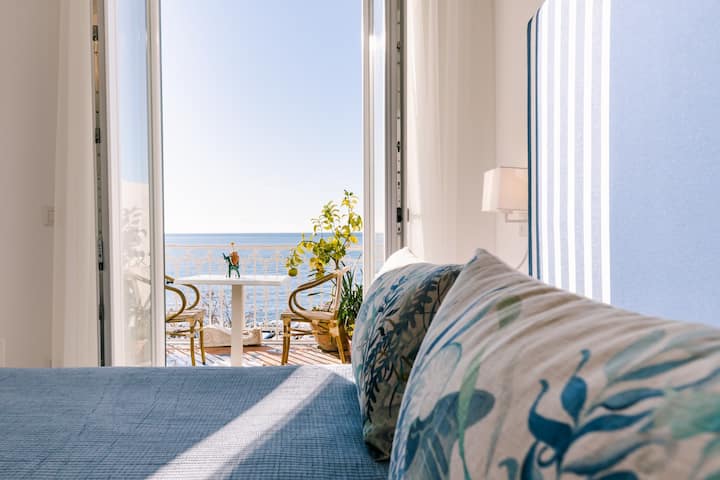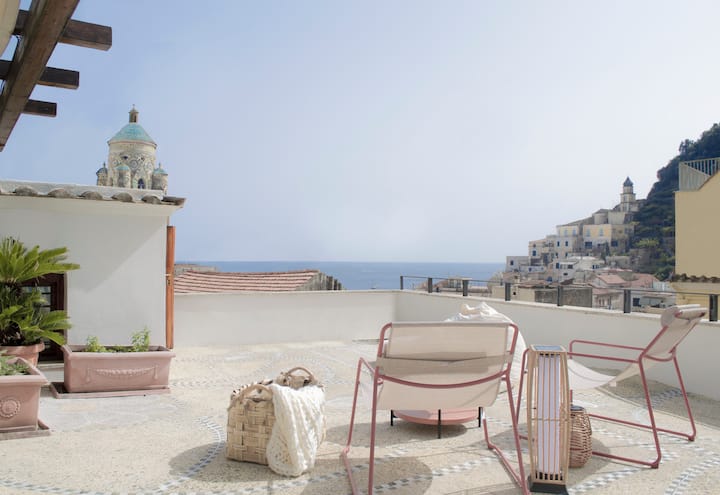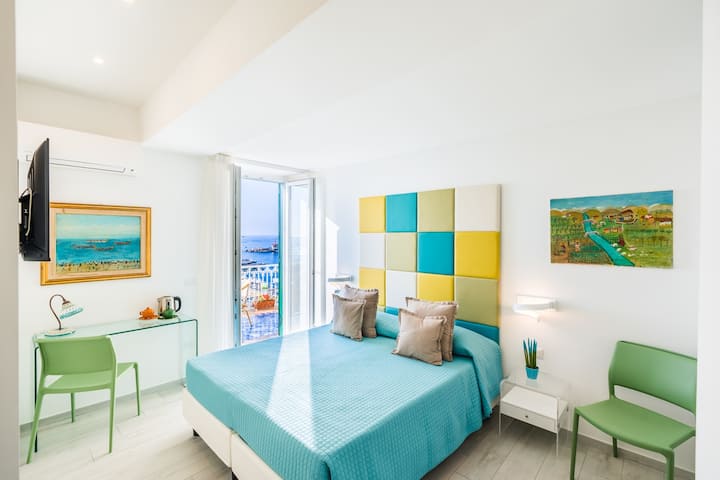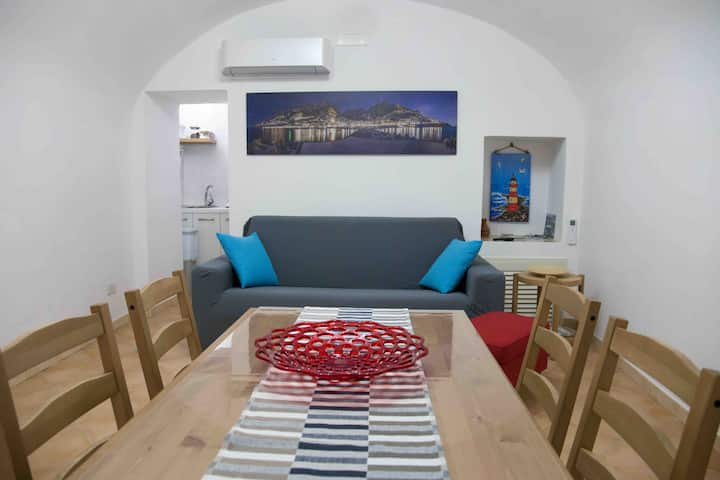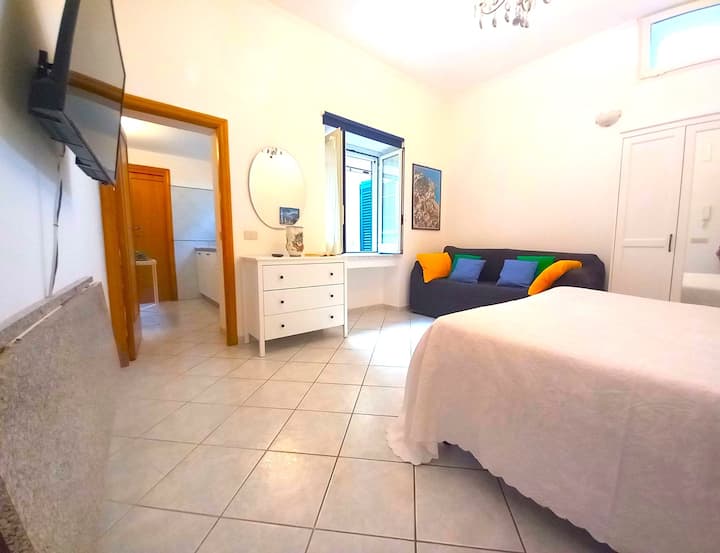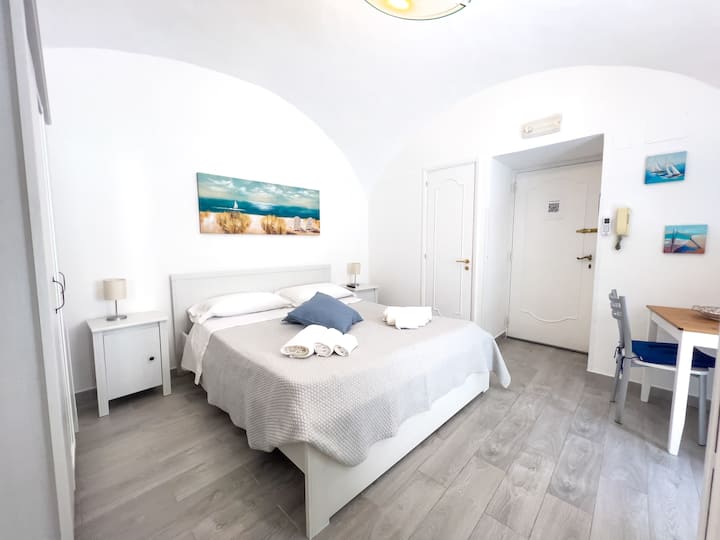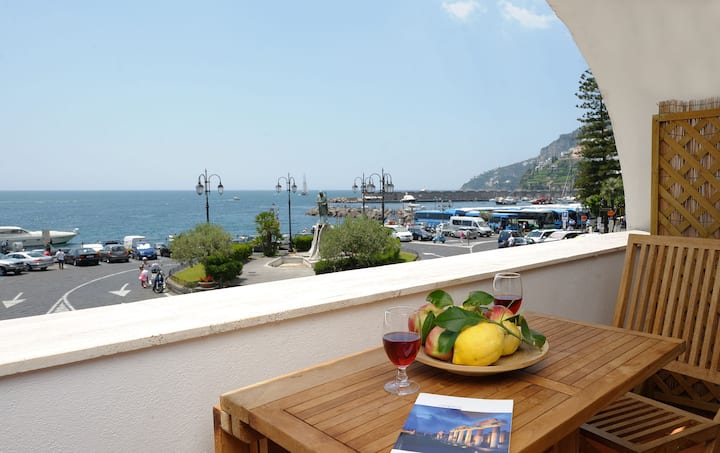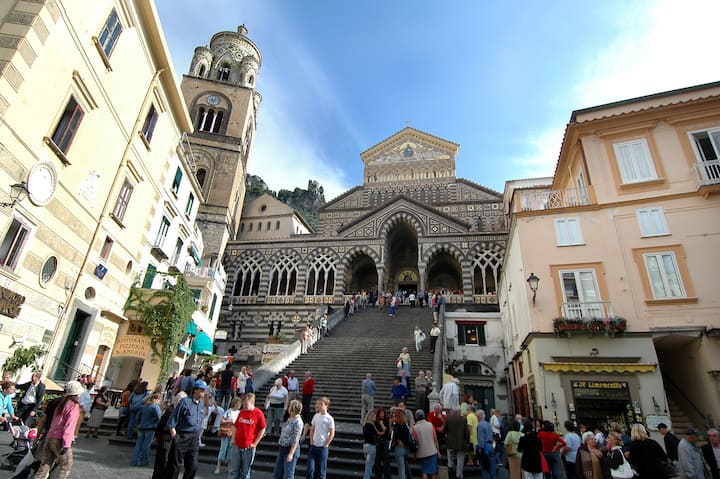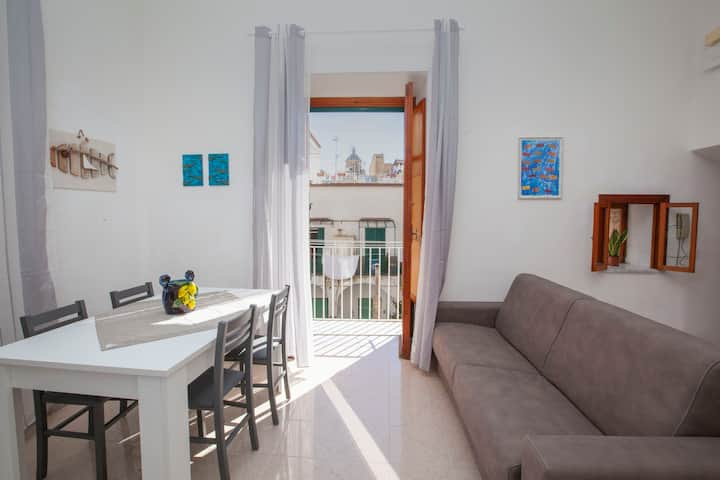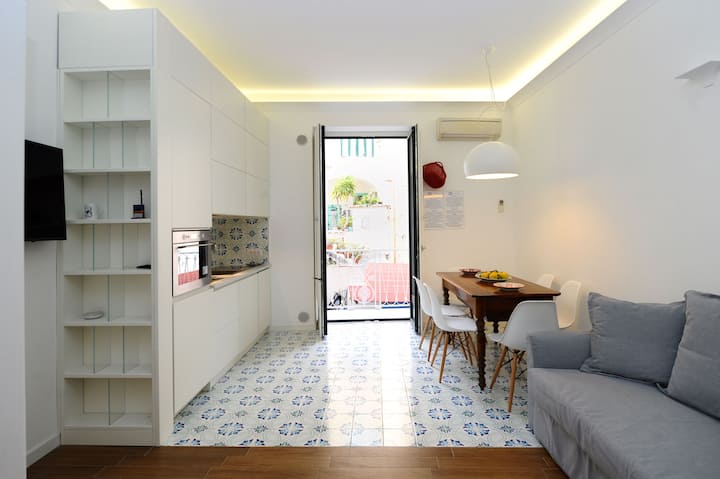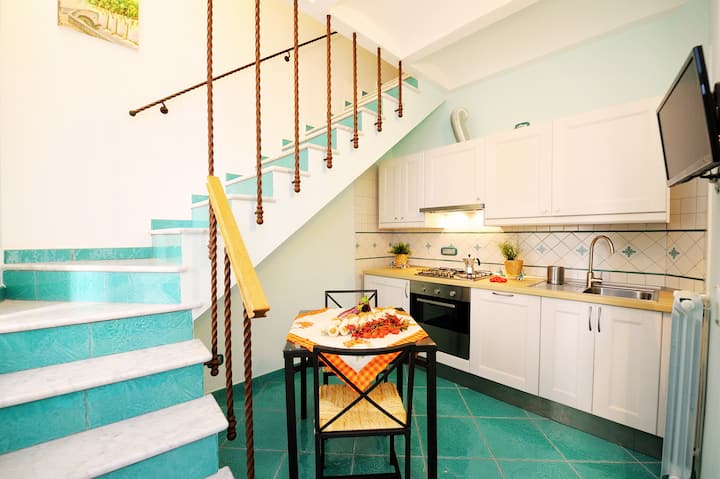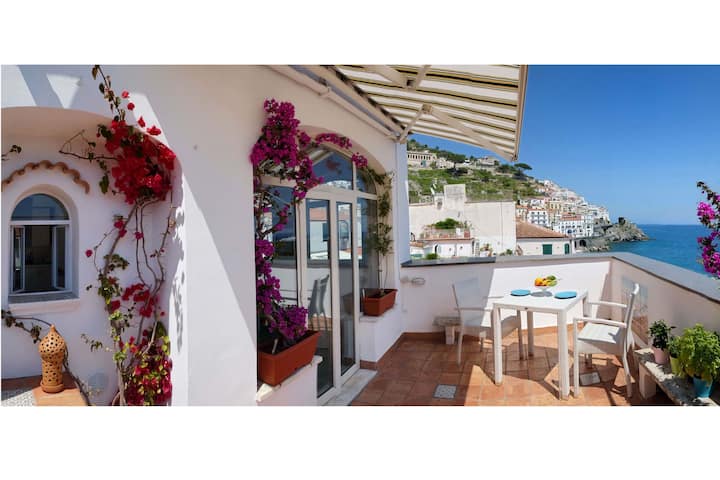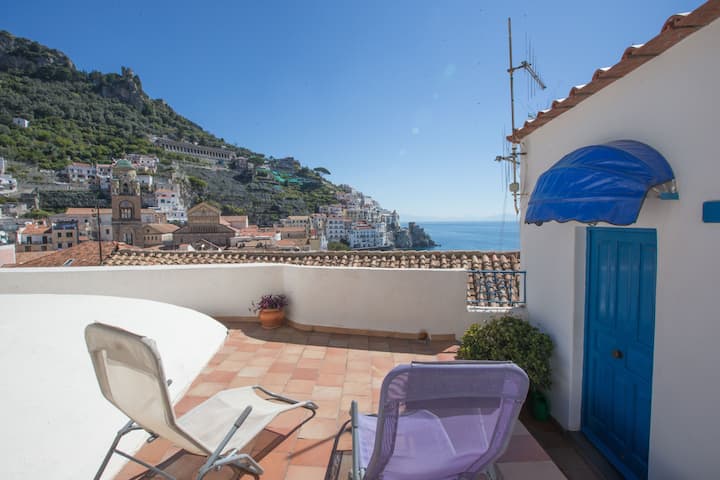Tarihi alan
Centro Storico
Yerel halktan 154 kişi öneriyor,
Yerel halktan ipuçları
Best for sightseeing, drinking and street life The centro storico (historic center) is the noisy, throbbing heart of Naples that gives the city its notorious punch. Upon arrival expect to be hurled slap-bang into a theatrical time warp of crowd-packed squares, frescoed cloisters and subterranean streets along which Roman chariots once thundered. Night owls will have a field day in the warren of well-worn wine bars, historic cafes and edgy after-dark venues.
Best for sightseeing, drinking and street life The centro storico (historic center) is the noisy, throbbing heart of Naples that gives the city its notorious punch. Upon arrival expect to be hurled slap-bang into a theatrical time warp of crowd-packed squares, frescoed cloisters and subterranean…
Centro Storico- Historic Center 1. A bit of history It’s the largest area in Europe to keep memory of its past: twenty-seven centuries of history on a surface of 17 km2, or 14% of the entire urban area. Although a precise line of demarcation would be difficult to draw, the historic centre roughly extends, obliquely, from Porta Capuana to Chiaia and, vertically, from the first spurs of the Vomero hill to the sea. The city has retained extraordinary records of all its historical periods: from the founding of the Greek Colony of Parthenope in the 8th century BC to the subsequent arrival of the Romans, from the Swabian period to the fine. Angevin kingdom, from the Aragonese domination to the Naples of the Viceroys and, later, of the Bourbons; from the strenuous process of modernisation that followed the Unification of Italy to the late 19th and early 20th century buildings in the distinctive architectural style known as Umbertino. But more than any description of Naples will do this quote from the UNESCO World Heritage Site declaration of 1995: « It is one of the most ancient cities in Europe, whose contemporary urban fabric preserves a selection of outstanding elements of its long and eventful history. Its street pattern, its wealth of historic buildings dating back to its many diverse periods, lend this site an unmatched historical value which has had a profound influence in many parts of Europe and beyond ». 2.What to visit? Pignasecca Market: For a taste of Neapolitan street theatre in the raw, head to the sprawling, chaotic Pignasecca Market, the ancient market of Naples which takes place daily around this 15th century gateway. Although you can buy anything here, locals come to grocery shopping and to haggle over some of the best and freshest fish and seafood in Italy. Go for lunch or dinner to Pescheria Azzurra (See below) The market open daily from 10 am to 8 pm. Museo Archeologico Nazionale: if you only visit one museum in Naples, make it this. The Farnese family’s peerless haul of ancient Greco-Roman art and artefacts forms the core of the collections, which are housed in a vast, 17th century former university building. You can see the colossal Farnese Bull, the pumping-iron Hercules and the pair of powerful tyrant killers- all Roman copies of early Greek sculptures. Of the collections on the upper floors, best are the exquisite mosaics from Pompeii and Herculaneum and the saucy ancient erotica in the Gabinetto Segreto, plus the bronzes from villa dei Papiri in Herculaneum, among which the five female dancers and pair of lean athletes, poised for flight, are standouts. www.museoarcheologiconapoli.it, Piazza Museo Nazionale 19, adult/reduced € 12/6, opens 9 am-7:30 pm, closed on Tuesdays. Cappella Sansevero: Placed at the centre of the nave of the Sansevero Chapel, the Veiled Christ is one of the most famous and impressive works of art in the world. www.museosansevero.it, Via Francesco de Sanctis 19, adult/ reduced € 7/5, open every day 9 am – 7 pm; Saturday: 9 am – 8.30pm (from May to December 2019), Last entry 30 mins before closing, Closed on Tuesdays. Complesso monumentale di Santa Chiara: The religious complex is accessible from Via Benedetto Croce, known as Spaccanapoli, a long narrow street flanking the 14th century square-based bell tower. During the 1456 earthquake the bell tower was partly destroyed: only the marble base survived, while the three upper storeys were lost and rebuilt in Baroque style, and completed only in 1604. Today it’s possible to visit its interior, characterised by a spiral staircase which leads to the top floor: here, you can enjoy a memorable view of Piazza del Gesù. The Gothic structure of Santa Chiara was commissioned by Roberto d’Angiò and built from 1310. The Chiostro delle Clarisse has 64 columns made with precious 18th century majolica. The Chiostro dei Frati Minori has remained intact in its 14th century structure. www.monasterodisantachiara.it, Via Santa Chiara 49c, basilica free, Complesso Monumentale adult/reduced € 6/4.50; basilica opens 7.30am-1pm & 4.30-8pm, Complesso Monumentale 9.30am-5.30 pm Mon-Sat, 10 am-2.30pm Sun; Metro Dante. Piazza del Gesù with the spire of the Immacolata: A particular obelisk stands almost in the centre of the square Piazza del Gesù, with the copper statue of the Immaculate Mary on top of it. The spire was erected in the 18th century thanks to a public collection: it is covered in marble sculptures and resembles the spectacular floats used in religious festivals, a distinctive feature of the period. To this day, the annual event of December 8 is very much felt: a large crowd attends the ceremony where fire fighters place a wreath on top of the statue, to honour the Immaculate Conception. Piazza San Domenico: On the minor Decumanus (present-day Spaccanapoli), at a short distance from Piazza del Gesù, is another historic site: Piazza San Domenico Maggiore, named after the crenelated Gothic church dating back to the 13th century. The church was part of a large religious complex, which currently houses a public museum. Dominating the square is the central obelisk of San Domenico: the people of Naples, having survived the plague, erected it in gratitude in the 17th century. Majestic palaces overlook the square, making it one of Naples’ most beautiful piazze. Obelisk of San Gennaro: The statue of San Gennaro is placed on top of Naples’ oldest spire: indeed, the obelisk was erected by architect Cosimo Fanzago in Piazzetta Riario Sforza in 1636, to thank the saint for the narrow escape from the eruption of the Vesuvius five years earlier. Piazzetta Riario Sforza is located along Via dei Tribunali and, in ancient times, served as side entrance to the adjacent Duomo. Opposite to the square is an unmissable destination: the church of Pio Monte della Misericordia. Here, you will find a masterpiece of the Caravaggio, the Painting “The seven works of Mercy”. www.piomontedellamisericordia.it, Via dei Tribunali 253; adult/reduced € 7/5; 9am-6pm Mon-Sat, to 2.30pm Sun, Metro Piazza Cavour. Underground Naples This guided tour will take you up to 40 m below street level to explore Naples’ ancient labyrinth of aqueducts, passages and cisterns. Part of the tour (approximatively 5 minutes) takes place by candlelight via extremely dark and narrow passages.. maybe not highly recommended to claustrophobic persons. Info: 0039 081 29 69 44. Address: Piazza San Gaetano 68. Adult/reduced € 10/8. EN tours: 10 am, noon, 2pm, 4pm & 6pm. Metro Dante Naples cathedral and cloisters of the Girolamini The Gothic cathedral, known as « Duomo di Napoli », was commissioned by Charles I of Anjou towards the end of the 13th century. Here, in the lavish “Real Cappella del Tesoro di San Gennaro” are preserved the ampoules containing the blood of San Gennaro. Twice a year the blood liquefies during an event that attracts great popular participation. From the church it is also possible to access a vast underground area, rich in extraordinary archaelogical remains dating back to the Greek and Roman periods, as well as the late Middle Ages. Via Duomo 149, cathedral 8.30am-1.30pm & 2.30-7.30 pm daily, 2 €, and cappella di San Gennaro 8:30am-1pm & 3-6.30pm Mon-Sat, 8:30am-1pm & 4.30-6.30pm Sund, Metro Piazza Cavour The Roman Theatre in Via dell’Anticaglia On Via dell’Anticaglia, which corresponds to the upper decumanus, is the access to the remains of the ancient Roman theatre where Nero used to perform. The theatre, which originally had the capacity of five thousands people, got caught in subsequent urban developments. It dates back to the 1st century AD and was an open air venue, while the adjoining « Odeion », now disappeared, was a covered structure dedicated exclusively to musical events. Both Tacitus and Suetonius wrote that Nero, attracted by Neapolis’ Hellenistic culture, performed here several times, employing a numerous claque amongst the plebs to ensure public acclamation. Via San Gregorio Armeno (Street): Walking along Via Tribunali one will cross Via San Gregorio Armeno, aligned with Piazza San Gaetano. It is one of Naples’ best loved streets, thanks to its shepherds and nativity scenes. This beautiful street hides two jewels of the Neapolitan baroque architecture: the nearby convent and the church. The convent, in fact, was founded in 726 AD by a group of nuns who had escaped from Constantinopole, and was naimed after the holy bishop of Armenia, St Gregory. The cloister of the convent is one of the city’s most beautiful and evocative, in the centre a large 17th century marble fountain. Church: Mon-Fri 9.00 to 12.00, Sat-Sun 9.00 am to 1.00 pm, free entrance Convent: Mon-Sun 09.30 am to 12.00 pm, free entrance Piazza Bellini and the greek walls: The walls of the Greek Neapolis in Piazza Bellini. They are large tuff blocks which once belonged to the ancient city walls, dating back to the 4th century BC. The structure of the walls reveals that the planking level of the ancient city was ten metres below the present day one: the Greek and Roman city was, in fact, covered by the debris that came down from the hills above. The square is named after musician Vincenzo Bellini, who studied in the nearby conservatory of S. Pietro a Majella. Piazza Mercato: It is one of the most beautiful squares in Naples, but has been neglected for decades. The name originated in 1270 when the Anjou made this square the main market area of the city. But there is more to it: this square was where public executions took place, including that of the young Conradin of Swabia in 1286, and it was here that the people’s insurrection lead by Masaniello begun. The exedra and the church of Santa Croce e Purgatorio, that to this day dignify the site, were built by Ferdinand IV of Bourbon in 1781. Porta Nolana: Here originated, in ancient times, the road leading to Nola. This is why this 15th-century city gate is called Porta Nolana: the marble arch is enclosed between two massive towers known as, respectively, Tower of Faith on the left, and Tower of Hope, on the right. It is an area of lively commercial activity, take the time to have a walk at the market. The street at the back of the gate lead to Forcella neighbourhood. The cupola to the right belongs to the Basilica of the Santissima Annunziata, known throughout history for its foundling wheel where mothers used to leave their newborns, either driven by extreme poverty or because the child was illegitimate- hence the common surname « Esposito » (from « esposto » meaning « exposed »). The market opens 8am-6pm Mon-Sat, to 2 pm Sun. Metro Garibaldi.
Centro Storico- Historic Center 1. A bit of history It’s the largest area in Europe to keep memory of its past: twenty-seven centuries of history on a surface of 17 km2, or 14% of the entire urban area. Although a precise line of demarcation would be difficult to draw, the historic centre roughly…
Visiting the historic center of Naples means going through twenty centuries of history. The plan of the streets, the squares, the churches, the monuments, the public buildings and the castles constitute a treasure chest of artistic and historical treasures of exceptional importance, so much to merit the inscription, in 1995, to the UNESCO World Heritage List. The historic center of Naples, the largest in Europe, therefore contains evidence of different styles and periods, from the foundation, in the VIII century. a.C., of the Greek colony Partenope to the successive Roman domination, from the Swabian-Norman period to the Angevin kingdom, from the Aragonese Empire to the Kings of France up to Garibaldi and the Kingdom of Italy. Today little survives of the Greek city of the origins, which can be found in the remains of the defensive walls of the north-western area of the city and in a few other points of interest, including Via Mezzocannone. On the other hand, there are more archaeological sites from the Roman era, when Neapolis (the "new city") was flanked to the Greek settlement, now known as Palaepolis (the "old city"). Cemeteries, catacombs and various artifacts can be visited in the museums and archaeological areas of the city, including the area of San Lorenzo Maggiore. It is 10 minutes walk from Casa Carmela.
Visiting the historic center of Naples means going through twenty centuries of history. The plan of the streets, the squares, the churches, the monuments, the public buildings and the castles constitute a treasure chest of artistic and historical treasures of exceptional importance, so much to merit…
One of the hearts of the town. History, culture, food, shopping, art, music. The Centro Storico of the town deserve a day visit. It's just 20 minutes walking from Chiaia along the historic via Toledo. Once there, you have the choice to visit some of the most important neapolitan cultural attraction: Cappella Sansevero, Chiesa del Gesù Nuovo, Chiesa di Santa Chiara, the Duomo and the San Gennaro Chapel with the famous San Gennaro Treasure. The Centro Storico is a unique discover to do!
One of the hearts of the town. History, culture, food, shopping, art, music. The Centro Storico of the town deserve a day visit. It's just 20 minutes walking from Chiaia along the historic via Toledo. Once there, you have the choice to visit some of the most important neapolitan cultural attraction:…
Airbnb Deneyimleri
Konaklama şekilleri
Yakındaki konaklama yerleri
Yerel halkın diğer önerileri
- Yerel halktan 62 kişi öneriyor
- Yerel halktan 14 kişi öneriyor
- Yerel halktan 9 kişi öneriyor
Konum
92 Corso della Repubblica
Pozzuoli, Campania








